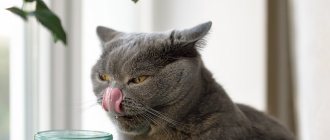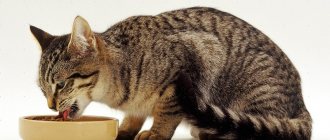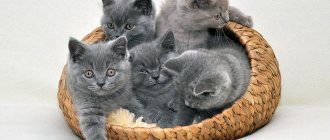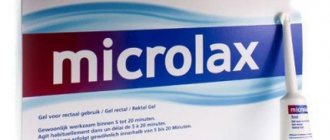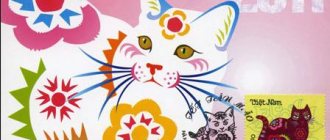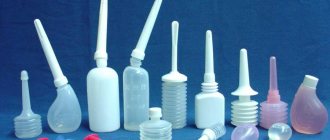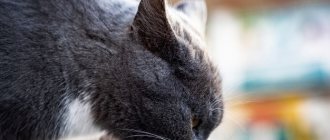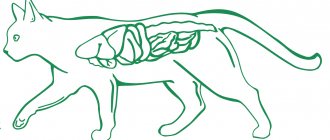Some cats, despite comfortable living conditions and round-the-clock access to food bowls, face the problem of being underweight. Thinness can occur suddenly or be an innate property of the animal. One way or another, when you look at such an individual, you want to immediately provide it with food in order to bring it to a “normal” state. But how to feed a cat so that increasing portions does not affect the health of the pet?
How to fatten a cat
This question is not as simple as it seems, since more food does not always solve the problem. In addition, several more equally important dilemmas are added to the question of fattening. How to determine where healthy weight ends and painful underweight begins? How to determine the condition of a cat? All breeds have different norms and pathologies, which is why the owner can easily become confused. We will talk further about the causes of thinness and methods of combating it.
How to feed your cat properly with natural food
You cannot feed an animal food from a human table: a cat has its own digestive system, different from a human one, and therefore many human dishes can be harmful, lead to illness, and in some cases, the death of a pet.
A cat by nature is a predator, so the basis of its diet will always be protein foods. Hormonal levels and the production of enzymes, the stability of the immune system and the maintenance of water-salt balance depend on the consumption of protein, especially of animal origin.
A balanced diet should contain fats. They saturate the body with fatty acids, which are necessary for cell growth and regeneration.
Vegetables do not play a big role in the diet of cats, but they are a source of vitamins and normalize intestinal function, so it is necessary to introduce a small amount of vegetables into the diet, such as:
- carrot;
- cabbage;
- cucumbers;
- salad;
- pumpkin;
- zucchini.
Important! Cat foods are cooked or fed raw. To preserve the health of your pet, cooking methods such as frying, baking, and smoking are unacceptable.
Meat and offal
The basis of a healthy diet for representatives of the cat family is meat and meat by-products. Cats can and should be fed the following meat products:
- Beef is the basis of the diet, the main thing is that it is not too fatty.
- Lamb, horse meat, and rabbit meat are quite acceptable in the diet of cats 2-3 times a week.
- Chicken or turkey can replace up to half of the meat diet. It is not advisable to feed poultry skin to cats: it contains too much fat.
- By-products - heart, kidneys, liver - are acceptable in the diet in moderation and pre-frozen.
Frozen meat must be thawed and doused with boiling water, warmed to room temperature and only then given to the animal.
Important! Pork is contraindicated for cats: it contains too much fat and is difficult to digest in the gastrointestinal tract.
Dairy products
Dairy products are necessary for the cat's body as a source of animal protein, but natural milk is practically not absorbed by the digestive system, since the body does not produce a special enzyme to break down lactose.
But fermented milk products, on which various bacteria and rods have already worked, are perfectly digestible:
- kefir;
- cottage cheese;
- fermented baked milk;
- low-fat sour cream;
- yogurt.
All these fermented milk delicacies can be present in a cat’s diet every day, but always in small portions; they cannot be made the main dish.
Attention! Do not give animals fermented milk products with a long shelf life with preservatives. Products suitable for cats have a short shelf life - from three days to a week.
Fish as a basis for natural food
The basis of natural feeding for a cat should still be meat. It will not be possible to completely replace it with fish. Thawed sea or ocean fish can be given two to three times a week, replacing meat with it. Raw fish is given to the animal along with the bones: this is beneficial for the functioning of the cat’s digestive tract.
Attention! In boiled fish, the bones must be removed, since the bone in the boiled mass is easily separated from the fibers and can be swallowed whole by the animal.
Other foods for a healthy diet
You can include porridge made from rice or buckwheat in your diet. But only occasionally and little by little, you cannot constantly feed the animal with cereals.
Cereals are not healthy for a cat’s diet: they contain too many carbohydrates, which can cause an imbalance in the digestive system and destroy the intestinal microflora, which will lead to dysbiosis and a decline in overall immunity.
Attention! A large amount of carbohydrates in a cat’s diet causes problems with the functioning of internal organs, can provoke allergic reactions and lead to excess weight gain.
How to create a menu for a cat
To create a daily menu for a cat, you need to calculate the calorie content and determine the frequency of feeding.
Adult cats over 8 months eat 2 times a day, kittens from 3 to 8 months - 3-4 times a day, from 1 to 3 months kittens need to eat 5-6 times a day.
The calorie content of the diet for cats is calculated using the formula:
K*(30*m + 70), where m is the weight of the cat in kg, and K is the multiplier coefficient.
The coefficient for calculation is presented in the table below.
| Life stage | Coefficient |
| Obese cat | 0.8 |
| Overeating, cat with illness | 1.0 |
| Elderly cat | 1.1 |
| Neutered cat or sterilized cat | 1.2 |
| Growing or underweight kitten | 1.2-1.4 |
| Adult cat | 1.4 |
| Active adult cat | 1.6 |
| Pregnant cat | 1.6-2.0 |
| Nursing cat | 2.0-4.0 |
Let's give an example of a calculation. Let's say we need to calculate the daily calorie content for a neutered cat Vaska, who weighs 5.5 kg. Then the calorie content of his diet will be 1.2*(30*5.5+70)=282 kcal per day. Vasya is already an adult, so he needs to eat 2 times a day - 141 kcal per meal.
It is important to remember that not all foods are healthy for cats. As for vegetables, cats should not eat potatoes, onions, garlic, cabbage, legumes and mushrooms. Liver, river fish and offal are not recommended for cats.
What not to feed cats
Cats eat food from the human table with enviable pleasure, and many owners watch with emotion as the animal happily treats itself to candy or a piece of chocolate, licks ice cream or eats a slice of melon, peach, tomato, sausage, or cheese.
Of course, a one-time consumption of a small amount of products that are exotic for the cat’s body is unlikely to lead to a serious illness, but you cannot constantly give such products to an animal: this can cause a chronic disease and significantly reduce the pet’s life expectancy.
The following foods should not be included in cat food:
- Fresh milk - this leads to impaired intestinal motility and indigestion.
- Food from the table - salt and seasonings contained in human food can even cause poisoning. And sausage, for example, contains soy products and a lot of fats, which are harmful to the cat's health.
- Sweets - carbohydrates are harmful to cats, since sugar is not processed at all by the digestive system.
- Coffee and alcohol are poisons for animals.
- Raw unprocessed meat and river fish - it is better to give the meat boiled or at least pour boiling water over it, since there is a high possibility of infection with helminths. River fish can only be present in a cat's food in boiled form, with selected bones.
- Pork – contains too much fat that the animal’s stomach may not be able to handle.
- Tubular or sharp bones - damage to the esophagus or stomach will definitely lead to the death of the pet.
Eating such products by an animal will inevitably lead to illness and deterioration in health.
Veterinarian advice
There are several tips that experienced veterinarians give to cat owners who want to feed their pets natural products:
- You cannot feed fermented milk and meat products to an animal at the same feeding. Fermented milk products are given at one meal, and meat at another.
- Fermented milk products can be given separately or mixed together; only bran or half a raw egg can be added to them.
- Meat feeding is either meat, fish, or offal. You should not mix foods in one feeding.
The cat should always have a bowl of clean, fresh water: the animal should be able to replenish the lack of moisture in the body when it needs it.
Flour foods and diabetes
If an animal has a disease such as diabetes, then flour food is strictly contraindicated for it. A carbohydrate-free diet is indicated for feeding animals with this disease.
Eating food high in carbohydrates will aggravate the disease and may lead to the death of the animal.
Attention! Cats are not recommended to eat food containing large amounts of carbohydrates.
The main mistakes when planning your diet
I would also like to touch upon the topic of mistakes in feeding pets, made by owners with the best intentions. Despite the fact that each owner chooses his own intuitive diet plan for his pets, one can notice repeated and very sad “rake”, which people regularly continue advance.
Some cat owners believe that the doses of dry food indicated on the packaging are too small for their cats; some overfeed their pets with all types of meat, being confident in its clear benefits.
Sometimes an abundance of healthy food can cause various ailments
Complications with digestion or hair that arise later in an animal sometimes cause genuine surprise among the owners and a lack of understanding of their role in the resulting illness. We’ll talk about how to recognize your mistakes in planning your cat’s nutrition and stop them in time.
Common mistakes in feeding cats
Advantages and disadvantages of natural nutrition
Feeding your cat natural foods has its advantages and disadvantages. The main disadvantages are:
- the difficulty of creating a balanced diet;
- the need to give the animal separate vitamin and mineral complexes;
- short shelf life of the finished dish.
Advantages:
- ability to control quality;
- lower cost of products compared to ready-made feed;
- natural products are closer to natural nutrition;
- absence of dyes and preservatives in food.
Proper home nutrition prevents the occurrence of chronic diseases and allows the cat to lead a more active lifestyle.
It should be understood that when deciding to feed your pet natural products, the owner will have to spend part of his free time preparing food for the animal.
Reasons why a cat doesn't go to the litter box
Before you eliminate the cat smell in your apartment once and for all, you need to figure out why your pet doesn’t go to the litter box.
- The animal does not like the toilet. For example, you need to take into account that the size of the tray should be at least one and a half times longer than the cat itself.
- You should choose a darkened and secluded place, because the cat needs peace. There is no need to place several trays side by side, animals cannot stand this.
- Unsanitary conditions. Cats have an excellent sense of smell, they are very clean, so a litter box that emits a stench will become an insurmountable obstacle to the animal going there. You need to clean the toilet with special means.
- Fright may cause your pet to become stressed. From this, he begins, calming down, to mark his territory, splashing drops of urine anywhere.
- Revenge on the owner - a puddle in shoes or on clothes can mean that the cat is offended. It is worth showing patience and making amends to your pet. You cannot punish a kitten for this, because the situation will only get worse.
- Reaction to new odors that are perceived as a threat.
- Animal disease. It is more common in older males, and in young males, incontinence can mean a serious illness.
- An uncastrated cat marks its territory, thereby demonstrating its superiority in the house, and the cat attracts the male in this way. These marks smell stronger than plain urine. Only a castrated cat and a sterilized female will not mark corners, so there is only one way out - take your pet to the veterinarian.
Table: healthy and prohibited foods in a cat’s diet
The table below lists foods that can and cannot be given to a cat:
| Healthy | Harmful |
| Meat other than pork | Bread and flour products |
| By-products | Legumes and soybeans |
| Vegetables with low starch content | Potatoes and corn |
| Sea fish | Sweets |
| Cereals: rice and buckwheat | Chicken hollow bones |
| Dairy products | Fruits |
| Greenery | Fresh milk |
Soups
Soups should be an integral part of a cat's natural diet. The body of these predators needs fiber, which is contained in boiled vegetables and grains, and during the cooking process, many useful substances pass from meat or fish into the water. Cats suffering from stomach or intestinal diseases and small kittens especially need warm soups.
Meat soup with semolina and yolk
100 g of meat scraps or chicken, a small washed and peeled carrot, pour 0.5 liters of water and cook for half an hour. Then, stirring vigorously, add 1-2 tbsp semolina, 1 tsp. butter, raw yolk, keep on fire for another 5 minutes. Before serving, the meat can be removed from the soup and finely chopped with a knife.
Diet chicken soup with broccoli
Boil chicken meat (about 100 g) in a glass of water, cook several broccoli florets in a double boiler. Grind the ingredients in a blender until pureed, pour in lukewarm broth, add 1 tsp. butter. This dietary dish is enjoyed by both adult cats and kittens; it is also recommended to be prepared for picky cats who have a habit of eating meat and leaving vegetables in the feeder.
Low calorie fish soup
Low-calorie dishes are recommended for spayed and neutered animals, as well as for old cats prone to obesity. To prepare fish soup you will need:
- 0.5 l of water;
- 100-150 g of lean fish (hake, pollock, pike);
- small carrot;
- 2 tbsp. any cereal;
- ¼ tbsp. sunflower oil (optional).
Cut the fish, cook over low heat along with cereals and grated carrots for 0.5 hours. Then remove the fish, remove the spinal bones, cut and return to the broth.
Cream soup with meatballs
Products:
- minced meat (any except pork) - 100-150g;
- rice - 1-2 tbsp;
- carrots (small piece);
- green beans or green peas - 2 tbsp.
Method of preparation: cook rice and vegetable soup in 0.5 liters of water, 10 minutes before the end of cooking, add small meatballs formed from minced meat. Remove the meatballs, beat the rest with a blender, then return the meat balls to the soup. There is no need to crush them; the cat will prefer to take out whole pieces of meat from the soup.
Natural menu for cats every day for 7 days
For an adult animal, it is enough to divide the daily diet into two times, especially if it lives in a small apartment and does not have the opportunity to walk.
Sample menu for the week:
- Breakfast - chopped beef mixed with grated vegetables, dinner - cottage cheese mixed with half an egg.
- Breakfast - boiled chicken with rice, dinner - a piece of liver or heart.
- Breakfast - cottage cheese with low-calorie sour cream, dinner - chicken necks.
- Breakfast - boiled boneless fish, dinner - grated vegetables and beef.
- Breakfast – chicken with buckwheat and chopped herbs, dinner – kefir and egg.
- Breakfast - offal and boiled rice, dinner - chicken necks.
- Breakfast - fermented baked milk and buckwheat, dinner - defrosted sea fish.
By alternating foods, you can feed your animal tasty and inexpensive, maintaining the balance of nutrients it needs.
Important! The owner must remember that a cat with a natural diet must be given vitamin and mineral preparations for preventive purposes.
At what age should it be given?
You can feed kittens porridge, but only starting from 2 months of age. They must be prepared with milk, this is done so that the little fluffy’s stomach is prepared for the new diet.
After a year, cats should not cook porridge with milk, as such food will cause gastrointestinal overload.
If you are going to feed an adult cat, then you need to cook it in fish or meat broth. They most likely will not eat porridge on water, and they are not so nutritious.
How to switch an animal to natural food
It’s good when a kitten is accustomed to natural products from childhood, but it is quite possible to retrain a cat that is accustomed to dry food. If you change food suddenly, the animal may become stubborn, refuse to eat and go hungry for several days. To make the transition painless, you will have to try a little.
Natural food should be mixed in a small amount into the daily portion of dry food, replacing approximately 10% at first. Gradually, the share of natural food should be increased, and dry food should be reduced. After two weeks, you can completely switch to natural nutrition.
Get rid of cat urine odor with dry fog
The fog is called dry fog due to the ability of the disinfectant liquid molecules to separate from the water molecules.
The substance is sprayed using special equipment - a dry fog generator. The device is a compact fogger, with the help of which the liquid working mixture is converted into a vapor state. The technology is safe for both people and animals. What is our secret? The essence of our treatment is the use of neutralizing crystals that react with “odorous” components. Microscopic smart crystals interact with biological particles that irritate the sense of smell and deprive them of their ability to “smell”. As you can see, all ingenious is simple. However, in this situation the human factor, or rather the professional one, plays a paramount role.
The drug does not damage furniture, wallpaper, or appliances. For exposure to dry fog, no preliminary preparation of the room is required. The main thing is that the air temperature should not be below +12˚С. Doors and windows must be closed and the fire alarm must be turned off. No people or animals should be in the room during processing.
The smell of marks and urine from uncastrated cats
The marks that the furry male spreads throughout the house exude such an aroma that it is impossible to stay in the room. And I don’t want to part with the animal at all. We will help solve this problem too.
tags glow under ultraviolet light
The intensity of the odor of the marks of castrated cats is associated with the hormonal composition of the secretions. Our company has the necessary equipment with which the marks made are identified.
An exterminator uses ultraviolet light to find the cat's marks. After detection, each tag is treated with a special biological composition that destroys urea and destroys microbes and bacteria that contribute to the formation of an unpleasant odor.
After spot treatment, the specialist will deodorize the entire room using the dry fog method. This will allow you to get the maximum effect and rid your entire home of a specific smell forever.
Deodorization
To carry out disinfection and deodorization, special preparations are used based on hydrocarbon mixtures - solvents and aromatic components. Treatment agents are selected taking into account the individual characteristics, severity and persistence of the smell of cat urine. The drugs undergo appropriate certification, do not contradict sanitary standards and are approved for use in our country.
Specialists completely treat the living space, paying special attention to the source of the odor. After carrying out a set of measures, the customer will receive parting recommendations that will help prevent relapse.
As a result of total deodorization, unpleasant odors will disappear, and a light aroma of freshness and cleanliness will remain in the house for another month.
part of the Havard product line
What you need to know
In exceptional cases, re-treatment of the premises may be necessary. This may be due to the presence of several cats in the house or if the smell of urine has already ingrained itself into all surfaces. And if the pet continues to violate the rules of personal hygiene, the apartment will need to be treated up to several times a year.
But in order for the smell to never appear in the house, first of all, its source should be eliminated: namely, to wean the cat from shitting in prohibited places.
Why is the smell of cat urine difficult to remove on your own?
You are constantly cleaning up and erasing traces of the “crimes” of your furry pet, but things are still there, that is, the smell remains as it was. This is due to the ability of cat urine to instantly crystallize. These tiny particles do not dissolve even in gasoline. The porosity of spoiled materials also contributes to the persistence of the odor.
You can purchase advertised miracle drugs as much as you like, the manufacturers of which promise a 100% result in getting rid of odor. In most cases, this is a common marketing ploy. The smell will go away for a short time, due to an excess of fragrances and fragrances. And then he will come back again. And it’s not even that the kitten did something wrong again. The remedy just didn't help. Instead of overpaying for advertising, it is better to invite professionals - you will save time, money, and effort spent on cleaning.
Features of nutrition of different categories of animals
Some categories of animals have their own feeding habits depending on age and position.
Sterilized pets
Portions for spayed and neutered pets must be strictly adjusted. Such animals should not be overfed. If the animal gains excess weight, then you need to reduce the portion or switch to foods with lower calorie content.
Kittens
Milk should be present in the kitten’s daily diet; meat is given ground in a blender or meat grinder; the daily portion is divided into 5-6 meals.
Pregnant and lactating cats
The nutrition of a pregnant and lactating cat must be enhanced; you need to rely on the animal itself and the kittens that it carries and feeds.
Attention! After the animal eats food, the cup with leftover food must be removed; the food should not sit and sour all day.
The nature of the appearance of the cat spirit
If you think that cat scents are the most complex and persistent of all existing animal odors, then this is another misconception. Cat urine is practically no different in composition from the secretions of other animals. It consists of the following components.
- urochrome;
- urea;
- uric acid.
Only in one case will the stench spread throughout the room and become ingrained - rarely cleaning up after your pet.
Sample recipes for cats
Cooking for cats is not difficult, the main thing is that you don’t need to add salt, pepper or sugar:
- Mix low-fat cottage cheese with half a chicken egg, and the dish is ready.
- Finely chop the vegetables, boil and mash with a fork, add finely chopped meat or minced meat, a few drops of vegetable oil. You can give it in the form of porridge, or you can dilute it with broth.
- Finely chop the offal and mix with finely grated vegetables.
- Cut the chicken meat into pieces and boil for ten minutes in a small amount of broth, add a little buckwheat or rice and after a couple of minutes turn off the stove, leave under the closed lid for about twenty minutes.
It is not necessary to cook for your pet at once; you can store the prepared food in the refrigerator. Warm the food to room temperature before serving.
What do you need?
First of all, the owners of a kitten or an older cat to prepare natural food at home will need to decide on the type of meat, which should make up the bulk of the pet’s diet. Veterinarians recommend giving preference to turkey, chicken, rabbit and veal. It doesn’t matter what kind of meat the meat will be, the main thing is that there is no skin or fat in it. Homemade cat food can be prepared with several types of meat products at once.
In addition, the diet for cats should contain carbohydrates, which the pet can get from cereals. It is recommended to give preference to brown rice, buckwheat, oatmeal and wheat porridge. You can't do without vegetables. Cat food is often made with cauliflower or broccoli, pumpkin, zucchini, beets and carrots. It is strictly forbidden to add garlic, onions and spices to food. It is recommended to include a small amount of offal in the menu. The ideal option would be a chicken or turkey heart. Boiled eggs, liver, and kidneys are also added to the feed.
What happens if you ignore the smell of cat urine?
Prolonged and regular exposure to cat urine on various surfaces leads to the destruction of materials. Soft and porous materials are especially affected: carpets, upholstery, home textiles, wallpaper.
For the health of household members, the harm is relative. Due to the regularity of inhaling unpleasant odors, headaches may appear, and then nervous disorders.
A prolonged stay in a room thoroughly “saturated” with cat urine is absolutely contraindicated for newborn children and people suffering from diseases of the respiratory system.
Is it possible to have dry and wet dog food?
The nutritional needs of dogs and cats differ significantly. Because of this, you should not use ready-made dog food to feed cats. Their need for protein is much higher than that of dogs, which is why if they regularly eat the wrong food, the cat’s health will worsen. The cat's liver works with increased enzyme activity, which is aimed at digesting large amounts of proteins. With their deficiency, the activity of this gland does not decrease, which is why it is quickly damaged and pathologies develop.
The main differences between dog food and cat food are as follows:
- less protein;
- significant content of plant substances that are necessary for dogs and are almost not absorbed by cats;
- a small amount of vitamin A – for cats this substance is vital in significant quantities;
- lack of taurine - without this amino acid, the cat’s body cannot fully function. The substance is involved in many processes in the body and is necessary for all organs and systems;
- caloric content – cat food contains a higher fat content and contains more calories. For dogs, a higher carbohydrate content is necessary;
- kibble size – dry dog food is larger than cat food. This is especially true for food for large breed dogs. For cats, eating large granules negatively affects the dentofacial apparatus. Also, large pieces slow down the gastrointestinal tract and cause fermentation.
A cat will never refuse dog food
Dry dog food often attracts cats. They usually like it because of its unusual smell, unlike cat food. However, these hard pieces, in addition to harming the liver, can also cause injury to gums and teeth if intended for large breed dogs.
Nothing bad will happen to a cat that sometimes only eats from a dog’s bowl, but you can’t constantly feed it the same food as the dog.
Wet dog food also differs in nutritional content from cat food and cannot be used as a long-term replacement. They are allowed as a one-time snack, but not often. Unlike dry food, soft food, even for large dogs, does not injure cats’ gums and teeth.
Giving kittens dog food is strictly not recommended. As a last resort, you can feed your pet puppy food once.
What will happen in this case
If you regularly feed your cat dog food, this will have an extremely negative impact on his health. Feeding your dog cat food can also be harmful. The main consequences of a cat eating dog food will be the following:
- decrease in muscle mass and the development of obesity - muscle fibers atrophy and are gradually replaced by fatty deposits, which is associated with protein deficiency;
- decreased vision due to taurine deficiency;
- heart failure due to taurine deficiency;
- digestive problems - caused by a high content of plant fibers;
- skin problems due to fat deficiency;
- general unsatisfactory condition of the coat due to lack of fat;
- anemia due to a deficiency of a number of amino acids, since dog food does not contain eggs;
- asphyxia – develops if a cat chokes while swallowing large granules;
- disturbances in the functioning of the reproductive system - occur due to a lack of arachidonic acid in the diet;
- urolithiasis – dog food contains a high percentage of minerals, which is dangerous for a cat and provokes the formation of sand and stones;
- dental pathologies – cats’ teeth are not designed for eating large pieces of food. With regular feeding of dog food, deformation of the dentofacial apparatus will occur;
- chronic diseases - improper unbalanced nutrition will lead to the fact that all the organs and systems of the cat will suffer, which is why there is a high probability of the appearance of chronic pathologies.
Also, a cat with poor nutrition experiences a constant loss of strength and general apathy. The dangerous consequences of improper feeding do not appear immediately, and it is not uncommon for symptoms to indicate irreversible changes in the pet’s body.
Meat baby food is allowed for cats


